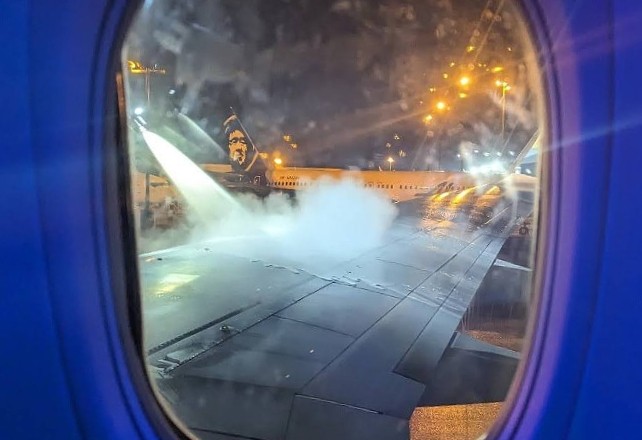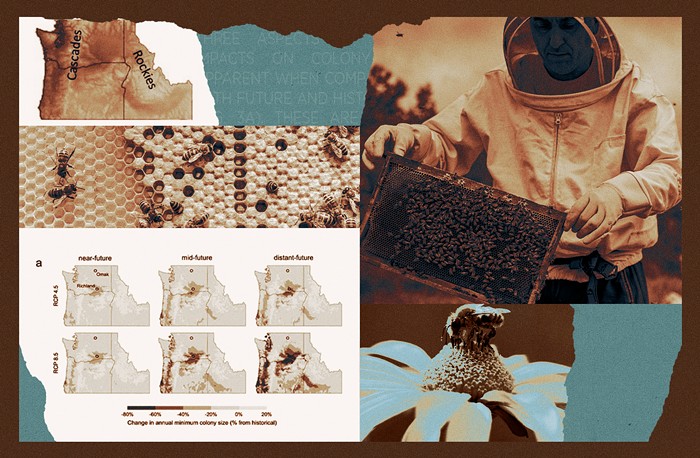
I think about the Really Big One all of the time. Maybe every day, especially if I'm feeling anxious. And if I ever move to a new apartment or office space that's made of brick, I scroll Seattle's list of unreinforced masonry buildings to double-check if the old building I now spend time in is at risk of tumbling during a big quake. (If it's on the list, it probably is.)
But my earthquake preparedness doesn’t get much further than worrying. Sadly, Seattle's doesn’t either. We know we live "on borrowed time," as Christchurch mayor Lianne Dalziel warned us years ago, yet the city hasn’t done enough to prepare for what happens when its brittle buildings start to shake. So, when I heard about a new online exhibit from AIA Seattle and the Seattle Architecture Foundation—appropriately titled When Seattle Shakes— that focuses on unreinforced masonry techniques in cities like Seattle and San Francisco, I fired up Zoom to talk to the exhibit’s curator about our city and its dangerous bricks.


We pruned this interview for clarity.
THE STRANGER: Break it down for us: What's an unreinforced masonry building (URM)?
MARY WAELDER: The way the city defines an unreinforced masonry building is: It's a building where the load-bearing walls are made out of brick, and that brick doesn't have any type of steel reinforcement. It's not tied back to any other kind of structure, and because it doesn't have a sort of continual reinforcement, it's at risk of crumbling or cracking or coming apart.
Brick is very strong in compression, but it's very brittle—it doesn't have a lot of ductility, which is a structural term for, basically, flexibility. So that's part of what makes [an unreinforced masonry building] really risky—not only to the building itself but to people who are walking by outside who might be hit by falling bricks or debris.
What makes Seattle particularly vulnerable to earthquakes compared to other seismically active cities you studied, like San Francisco or Tokyo?
In some ways, Seattle's overall seismic vulnerability is less than those cities, but vulnerability isn't just about what's going to happen geologically. It's also about what humans do to prepare and to shape their cities.
I would say Seattle has not been especially proactive in preparing for seismic events. We've repeatedly tried to pass ordinances about URMs and other hazards and haven't succeeded in doing that. Whereas, even though San Francisco has had more notable seismic events than we have, they have also succeeded in retrofitting most of their URMs and many of their soft-story buildings. So in that sense, our vulnerability, in terms of preparation, is greater.

What challenges do building owners face when they are looking at retrofitting their buildings?
I think that knowledge actually is a big one. And that's part of what I'm trying to address, which is just to let people know that this work is being done in the city. There are solutions to some of the challenges they may face with their buildings. Some of them are really complicated. And some of them, if you look at the Washington Hall case study, are just using plywood.
In general, building owners—and when I say building owners, I'm not talking about Amazon; I'm talking about small business owners—face challenges to decision making. The information isn't always clear, people are intimidated to work with [the Seattle Department of Construction & Inspections], and they know that whatever they do, it'll be expensive.
All of those obstacles become motivations to sell the property or let it be demolished. And that's what I really don't want to see happen, because it's not just about the buildings themselves. It's about the roles that the buildings play in their neighborhoods and the kinds of homes that they provide for community groups and small businesses that wouldn't necessarily be able to afford [a building] otherwise.
Let's say you're a small business that just moved into a building in Seattle that has issues with unreinforced masonry or concrete. What sort of restrictions or expectations are you facing?
Right now, there is not an ordinance or mandate about upgrading existing URMs [in Seattle]. That in itself is a problem because the work needs to be done. There are building owners who choose to do voluntary seismic upgrades, just for the safety of the people in their building. When it's voluntary, you sort of get to set what level of retrofit you want to do.
Can you talk a bit about how racial equity interacts with retrofitting policies?
On the exhibit's Actions and Opportunities page, you'll see a story referenced about a placarding ordinance that happened in Portland. Basically, Portland wanted buildings in their city to put up signs or placards in their buildings if they were a URM, saying that the building could collapse in an earthquake. It tried to tell members of the public, "Uh, just so you know, you could die here." The people who had to put up these placards didn't love that. And a lot of the property owners were historically Black churches and other underserved and marginalized communities.
The capital within that community is not necessarily available to upgrade the building to the standard that the city wants. And the reason why the capital isn't available is because the people who are there in the first place have been marginalized by racist land-use practices over generations. So, in Portland, it was a situation where people had obstacles put in their way and resources taken away from them over and over and over. And then the city was like, "You have to [make these changes to your building] or we're going to tell everybody that they're going to die in your building."
I think what that really illustrates is that if you are going to make demands on people in your city, but you are not going to provide them avenues to meet those demands, and you're not going to provide them resources or investment, what are you expecting to happen?
So, while I want to advocate for a URM mandate in Seattle because I believe it's an urgent matter of public safety, I also want to make sure that there's adequate consideration to financial incentives to support even little things, like providing translators to non-English-speaking building owners and maybe alleviating permit fees for people who need to do the work.
It's not that people don't want their buildings to be safe. It's that it's expensive and everybody knows that. Those costs are going to overburden marginalized building owners, or they're going to be passed on to renters. It just sort of keeps piling down on the people who have the least resources.

You used the term "seismic culture" in the exhibit, which I liked. What type of seismic culture should we try to foster in Seattle?
I would like to see a seismic culture that is aware and proactive.
A few years ago, there was an article that came out in the Seattle Times about how Seattle's old brick buildings could kill you, basically. That was great because it brought a lot of attention to the issue, but it was not acted on. A lot of the attention resulted in a sort of alarmist or hysterical response, where people are like, "Oh no, I'm in danger," but then nothing happens. And then the only way to make people feel better about it is if they sort of forget—which doesn't solve anything.
If right now we're in a culture of denial, then we need to be in a more educated seismic culture, so that when a mandate occurs, which at some point it really has to, people will be ready for it.

Let's say I'm a Seattle citizen concerned about URMs, which I am. How do I make my anxiety productive? How do I move beyond denial, as you put it?
There are a few things that you can do on a personal level. You can make an emergency preparedness kit. It's also good to communicate with your neighbors about what you would do if there were a catastrophe of this kind. I think people have been leaning into mutual aid during COVID, but it applies to really any type of situation where you and your community might find yourselves in need of shared resources.
You can also communicate with city council members or county council members. King County is looking at implementing a program called C-PACER, which is a financial mechanism for funding resilience work. It includes work that's related to sustainability and seismic upgrades.
Final words?
I think I've already said something in this vein, but what we call natural disasters are not just the natural occurrences themselves; they're human choices. So what we are doing now or not doing now is a part of our next natural disaster—because a natural phenomenon that occurs without any impact on humans isn't a disaster at all. We have a part in shaping that impact.
Make sure to browse When Seattle Shakes, available online here. You can also join Mary Waelder at 6 PM tonight—Wednesday, February 17—for a digital curator talk. RSVP here.















